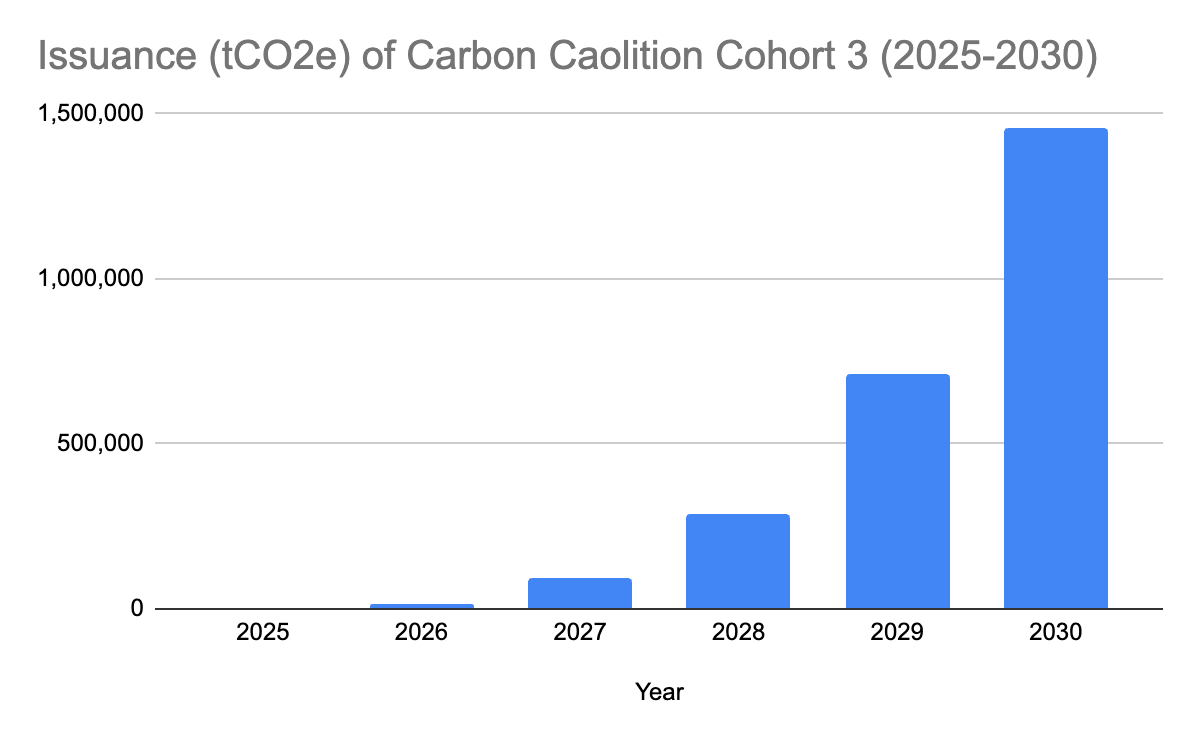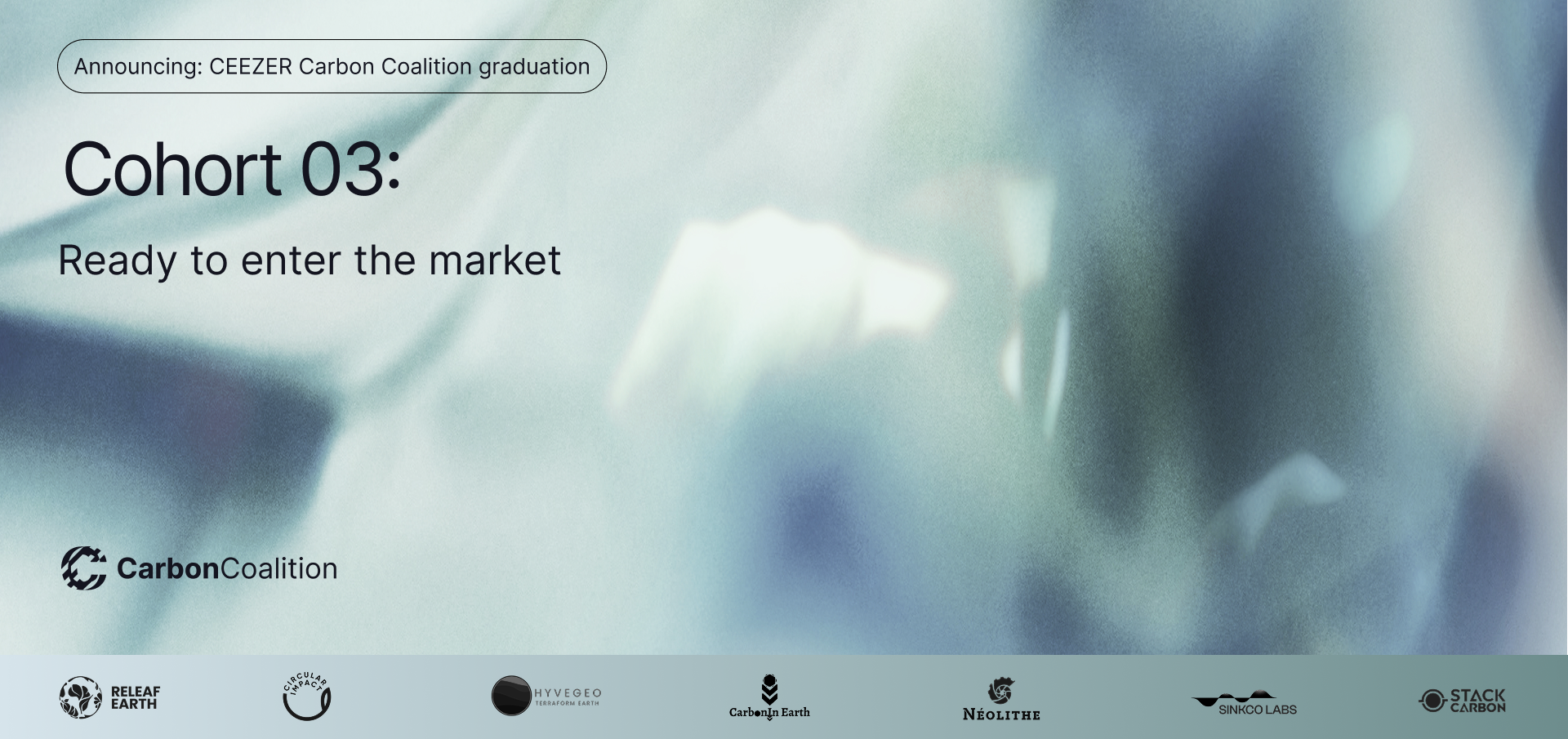A new cohort of the CEEZER Carbon Coalition accelerator program has successfully graduated in June 2025. The seven companies selected to participate in the third edition of the program are a step closer to commercialization readiness. Together, these innovative CDR players project to permanently remove nearly 2.5 million tons of CO2e by 2030.

The EU Commission recently proposed an amendment to the EU Climate Law, setting a 2040 EU climate target of 90 percent reduction in net greenhouse gas (GHG) emissions, compared to 1990 levels. Achieving this goal requires carbon markets to innovate and evolve as quickly as possible. The CEEZER Carbon Coalition accelerator program aims to bridge critical gaps between early-stage CDR innovation and successful market commercialization, addressing this urgent need for scalable climate solutions in the voluntary carbon market.
Graduates explained the program enabled them to engage directly with “a broad spectrum of actors, including registries, project developers, and buyers, to clarify the dynamics of trust, transparency, and quality in the market.”
Accelerating growth and innovation in the carbon removal industry
Representing diverse technologies including biomass burial, waste transformation, biochar production, and enhanced rock weathering, these companies were chosen from a highly competitive applicant pool of 65+ startups spanning 35 countries and five continents.
Here are the seven startups that participated in Cohort 03 of the CEEZER Carbon Coalition:
- Blue Lotus Solution (India) pioneers biomass fossilization, a carbon removal solution that permanently stores biomass waste by replicating natural fossilization processes.
- Neolithe (France) transforms non-recyclable, non-hazardous waste residues into “Anthropocite” — a synthetic aggregate that can be used in the construction sector as a substitute for quarried stone.
- Circular Impact (Kenya) converts sugarcane bagasse into biochar blended into organic fertilizer products.
- Sinkco Labs (USA) harnesses the potential of the seafloor to deliver safe, permanent and scalable carbon storage while improving coastal resilience.
- Stack Carbon (Uganda) leverages natural mineralization to sequester CO₂ while improving soil health and supporting local communities.
- HyveGeo (UK & UAE) transforms locally sourced agricultural residue into a biochar-based formulation that regenerates desert sand into arable land.
- Releaf Earth (Nigeria) specializes in producing high-quality biochar from waste nut shells to enhance smallholder yields and sequester carbon.
Globally, only 0.75 million tons of CO₂ have been removed so far (as of Q2 2025, according to CDR.fyi) versus the 10-gigaton target by 2050 — a huge gap demanding immediate investment. Collectively, these seven promising project developers are scaling CDR technologies across geological, terrestrial, and ocean approaches to tackle this urgent need.
Our graduating startups are now active on the CEEZER platform under the “preview” listings, these suppliers have a chance to partner with sophisticated buyers looking to invest early in CDR projects.
These projects will transition to full listings on the platform once they are registered under the CEEZER supported carbon-crediting programs (e.g., Puro, Carbon Standard International, Isometric and Rainbow Standard) and are mature enough to pass CEEZER’s risk screening process.
A program bringing together partners from across the industry
The project developers explored key aspects of the Voluntary Carbon Market (VCM) through customized individual sessions with CEEZER’s experts and group sessions led by partners from the field.
- Buyer drivers and challenges: Analysis of the strategic and sustainability drivers behind corporate participation in the VCM.
- Buyer behavior: A corporate case study with a CEEZER buyer illustrating approaches to carbon credit procurement, including budget allocation and compensation strategies.
- Carbon crediting programs (with Isometric): Overview of carbon crediting standards, methodologies, and registries, highlighting alignment with buyer preferences.
- Policy & partnerships (with Carbon Business Council): Discussion of the enabling role of policy frameworks, collaborative partnerships, and transparent communication in project success.
- Monitoring, reporting, verification (with Mangrove Systems): Examination of MRV as a foundation for market integrity, ensuring that carbon sequestration claims are credible, measurable, and permanent.
A particularly valuable piece of the program highlighted by participants was its insights into company positioning, including how to go beyond project technicality and speak directly to market expectations. They learned to frame these initiatives, “not just from a scientific or technical lens, but as compelling stories that resonate with buyers and stakeholders.”
The cohort’s key learning and takeaways from the program
As the program came to a close, project developers shared the main takeaways they will carry with them throughout the commercialization journey. Some highlighted the program’s impact on their go-to-market strategy.
"CEEZER has given Sinkco Labs a sharper pulse on the global carbon market,” says Hamilton Harler, Head of Partnerships for Sinkco Labs. “Their insights into buyers' drivers, challenges, and behaviors have been instrumental in helping us refine our go-to-market strategy with clarity and confidence."
Others felt the program helped prepare them to scale effectively in a market that’s rapidly evolving.
“We’re honored to have been part of CEEZER’s third Carbon Coalition cohort,” said Haroon Dawood, Director of Carbon Projects, Circular Impact. “The program equipped us with the insight, connections, and momentum to scale our biochar carbon removal efforts. We're ready and excited to drive environmental impact together with the rest of this awesome and inspiring cohort of organizations.”
Next Carbon Coalition application window opens in 2026
The application window for the fourth CEEZER Carbon Coalition cohort is expected to open in early 2026, with the specific date communicated later this year. Learn more and get notified when the application window opens here.
A bit more experienced? We are always seeking established project developers selling high-quality carbon credits to join the CEEZER platform. Schedule a demo call to explore the possibilities.



